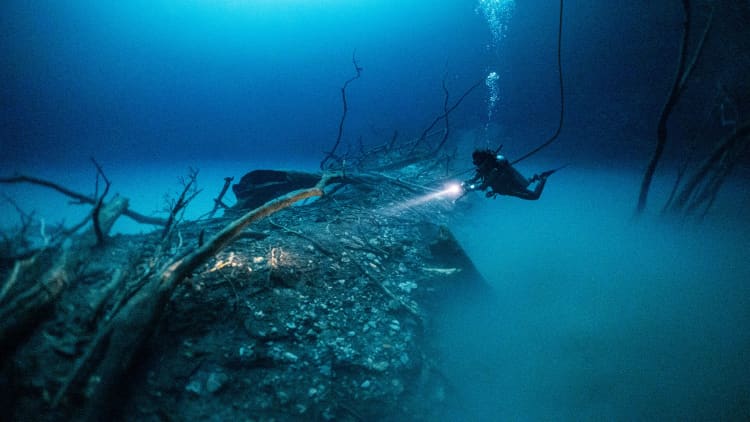Next front in U.S.-China tech battle is underwater internet cables
Subsea cables are the backbone of the internet, carrying 99% of the world’s data traffic.
Serg Myshkovsky | Photodisc | Getty Images
U.S.-Chinese tensions surrounding technology have have sunk to sea lows.
Subsea cables hit the headlines earlier this year after four out of 15 critical submarine cables in the Red Sea were cut amid attacks by Yemen’s Iran-backed Houthi rebels on Israeli U.S., and U.K. ships.
Public awareness of submarine cables has grown as a result — and these networks of cables are becoming a new source of strain in international relations, amid heating geopolitical engagements between the U.S. and China.
What are subsea cables?
Buried deep underwater are hundreds of massive telecommunications cables spanning a length of nearly 1.4 million kilometers, according the telecom market research firm TeleGeometry.
Some of these cables are shorter, such as the 131-kilometer CeltixConnect cable linking Ireland to the U.K., for example. Others, however, run for far longer distances — like the 20,000-kilometer Asia America Gateway cable.
The number of subsea cables around the planet is expected to increase in the coming years, reflecting growing demand for data traffic prompted by the spread of video streaming and cloud services.
As of early 2024, TeleGeometry said its data tracked 574 active and planned submarine cables.
Why are they important?
Subsea cables are the backbone of the global internet, carrying 99% of the world’s intercontinental data traffic.
“If you have e-mailed, texted, or video chatted with someone on another continent, you’ve used a subsea cable — likely without giving it a second thought,” Andy Champagne, chief technology officer of Akamai Labs, told CNBC via email.

“While we’re linked together with a complex physical web of fiber optic cables over land, the topology becomes more challenging once we plunge into the oceans,” Champagne added.
“It’s really complex to install subsea cables. And, when there is an issue with a subsea cable, repairing it is a non-trivial job.”
A key thing that makes subsea cables important is the impact they have when disrupted, according to Joe Vaccaro, vice president and general manager of Cisco-owned internet monitoring firm ThousandEyes.
“Individual people like you and I, we don’t say undersea cable cut. What we find is that the application we’re trying to access all of a sudden became really slow, or unavailable,” Vaccaro told CNBC in an interview.
“When those cuts happen, ultimately, the underlying providers that are carrying that traffic have to then try to dynamically shift the traffic into different routes,” Vaccaro added. “What happens when you do that? You see a level of congestion happen.”
A growing security risk
Subsea cables were traditionally owned and operated by telecom carriers. More recently, U.S. tech giants including Meta, Google, Microsoft, and Amazon have invested significant sums to lay down their own cables.

In 2021, Meta and Google announced plans to lay two huge subsea…
Read More: Next front in U.S.-China tech battle is underwater internet cables
